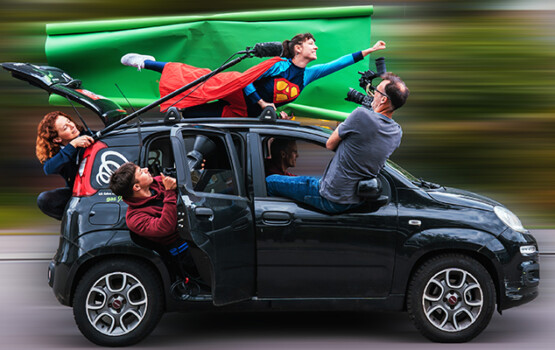Portal for more climate-friendly mobility
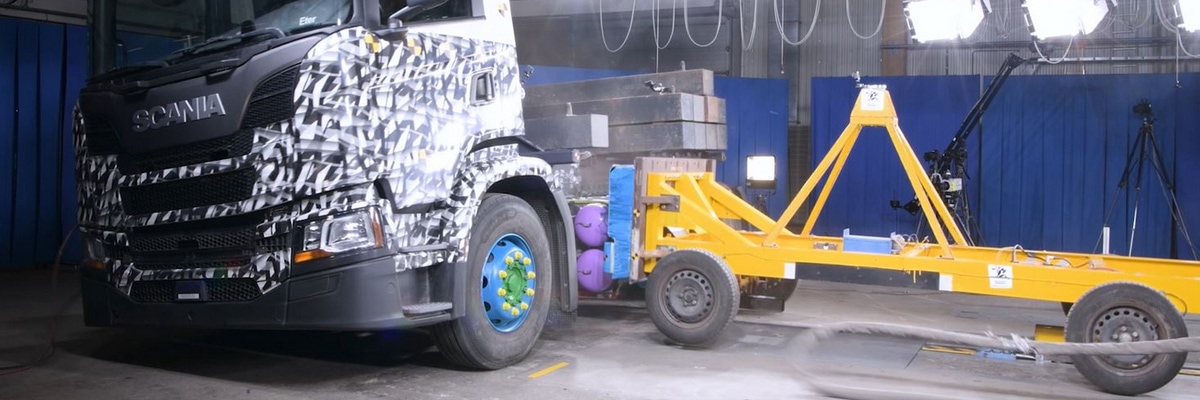
Scania makes a big splash
Crash tests ruthlessly reveal weak points or show how safe vehicles are. This is also demonstrated by the video from the crash test of a biogas truck. The test impressively demonstrates what the gas tanks on board a truck can withstand.
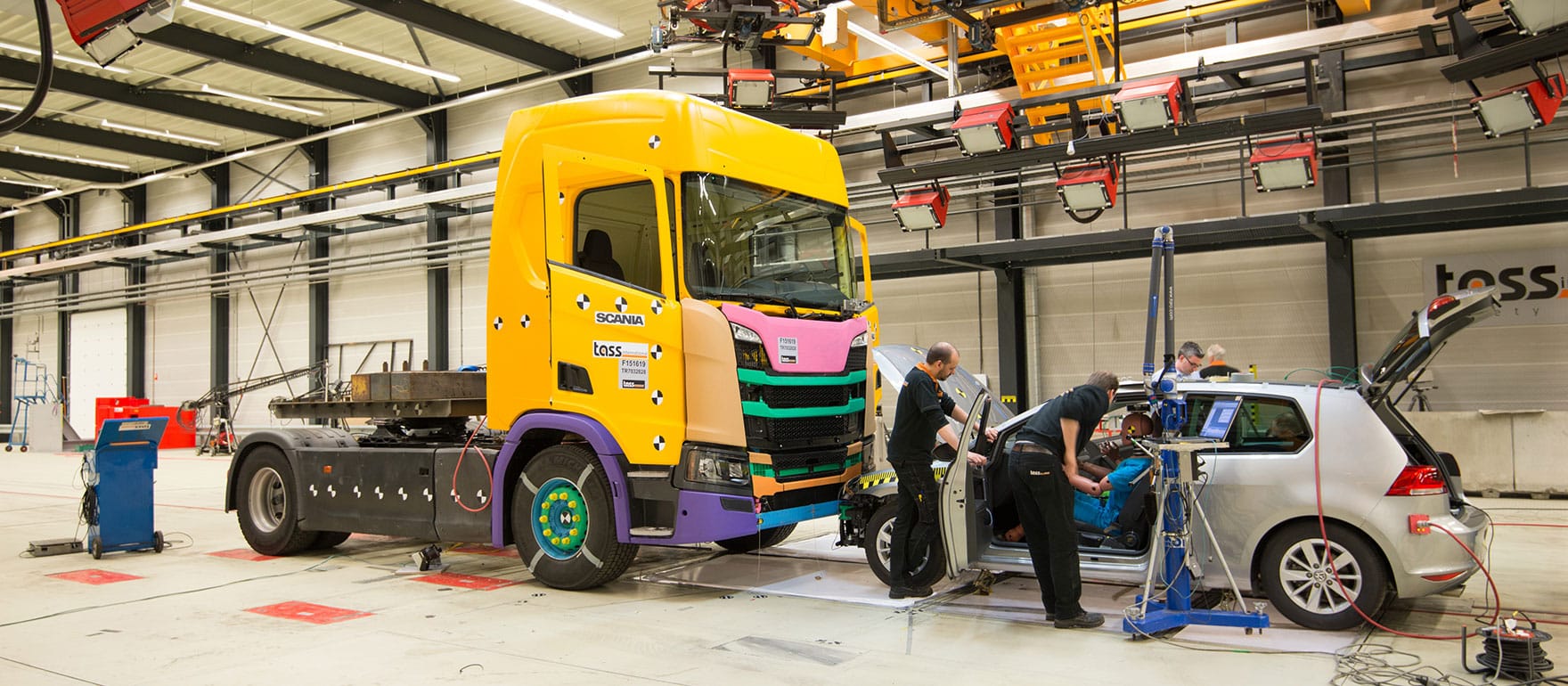 Preparations for a crash test at Scania, here for a collision with a passenger car. Source: Scania
Preparations for a crash test at Scania, here for a collision with a passenger car. Source: Scania
In the early 2000s, a new era of transport and road safety began. Active electronic systems to support driver performance have also been introduced in trucks and other commercial vehicles, including the Electronic Stability Programme (ESP), which is familiar from passenger cars. The feature introduced at Scania in 2004 stabilises the truck when there is a risk of it skidding or overturning. Or it also prevents a jackknife situation when the l semi-trailer tractor with its trailer suddenly threatens to “fold up” like a Swiss army knife.
“Safety is part of our company DNA. Scania has always invested enormous resources in this area, and we often strive to go beyond road and vehicle safety regulations,” explains Dan Loftén, Scania’s Chief Crash Safety Engineer. Stronger cabs, emergency brakes and better protection for drivers and other road users are now standard components of a modern truck’s safety package, regardless of its brand.
But what about alternative engines? Are the gas tanks really safe even in the event of a truck crash, for example, when unbelievable masses and forces interact with each other? With an impressive crash test performed on a CNG truck, the Swedish manufacturer wants to prove that the gas tanks offer even more safety than the law requires. After months of preparation, safety expert Dan Loftén is really looking forward to the crash, in which a CNG truck with 80-litre gas tanks has to withstand a severe side impact. “We position the semi-trailer tractor with a heavy load sideways across the test track. And we pull a malleable barrier, which represents a car, directly into the side-mounted gas tank system, simulating a strong side impact,” he explains. Then everything is finally ready: Loftén can really make a big splash.
 The crash test shows the enormous forces to which the gas tanks are subjected, yet still offer maximum safety. Source: Scania
The crash test shows the enormous forces to which the gas tanks are subjected, yet still offer maximum safety. Source: Scania
Loftén’s happy smile remains on his face even after the crash, as the gas tanks are not damaged despite the heavy side impact. Scania’s security concept worked. However, the work for Dan Loftén and his team is not yet finished. The truck is thoroughly inspected. The engineers dismantle individual parts that they find interesting. “We carefully analyse the data from the measurements during the test and also watch the high-speed videos to get a detailed overview,” reveals the Scania expert. “The material can also be used for simulations and to develop simplified test methods, as testing with a real vehicle is expensive.” But one thing is already clear: HGVs with alternative engines such as LNG, CNG or biogas are also very safe. (pd/jas, 20 October 2022)
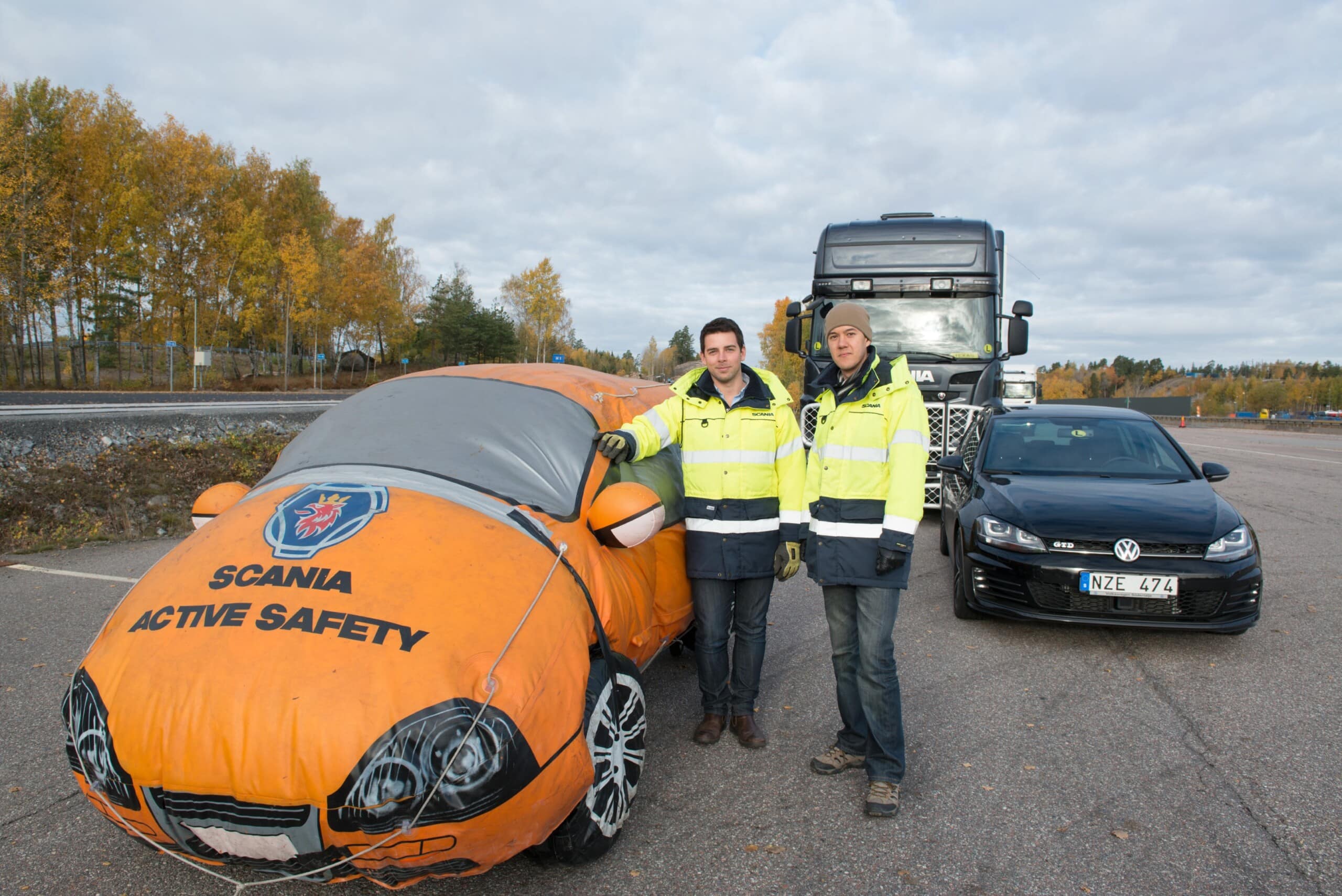 Safety experts Nils Eriksson and Joseph Ah-King testing Scania’s advanced emergency brake. Source: Scania
Safety experts Nils Eriksson and Joseph Ah-King testing Scania’s advanced emergency brake. Source: Scania
You might also be interested in
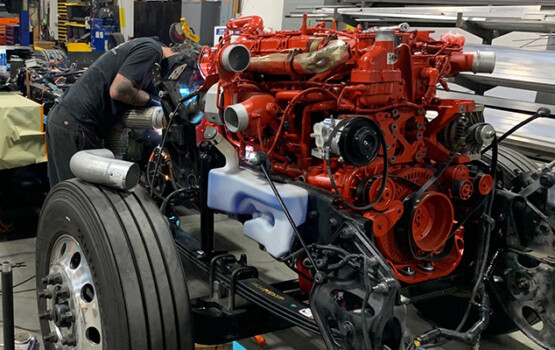
Operation on the open CNG heart
